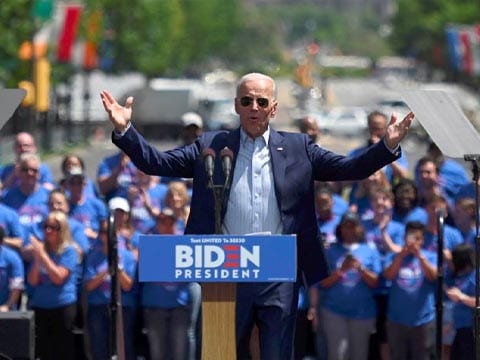
With only 22 days left until voting sites open, the battle to win key states tightens. Trump holds his first rally since his Coronavirus diagnosis in Florida while Biden goes head to head with Mike Pence in Ohio. Jill Biden campaigns in the Lone Star state, and even Kanye West joins the action, releasing his first presidential campaign ad.
https://t.co/ZURvTEW9ee we stepping out on faith pic.twitter.com/ypQfooB35w
— ye (@kanyewest) October 12, 2020
I know we are all holding out for Mr. West to emerge as the presidential dark horse hero. Unfortunately, however, the arrested development of the American political consciousness makes this possibility what some (non)experts call “probably a load of crap.”
Today, as the campaigning rat race scurries everywhere from the Bible Belt to the Rust Belt, the books drop tantalizing odds that provide a broader context on the state of the American cheese wheel. Below we analyze those odds and give our take on the big questions concerning the electoral college and who controls the legislature.
Pro Tip: Spicy wing plates + spicy swing states do not pair as well as the rhyme suggests.
Democratic Party Election Sweep
Yes -130
No +100
A Democratic Sweep of both the House and Senate carries broad implications for Americans, including substantial federal tax reform and a robust Coronavirus stimulus relief package.
Most polls predict that the Democratic party will lead by an average of at least 43 seats in the House, while Senate polls indicate a smaller margin with a Democratic lead of an average of 1 seat.
Along with electoral college tossups, these stats make us reconsider putting all our eggs into one basket relying on a Democratic sweep.
House Seats Won by Democrats
Over 209.5 Seats -3300
Under 209.5 Seats +1400
If it is just the House, we safely assume that the Democratic party will retain its majority.
Majority Control of the U.S. Senate
DEM Senators in 117th Congress -225
REP Senators in 117th Congress +160
U.S. Senate & House of Representatives
Any Other balance of Power -170
DEM Control House & REP Control Senate +140
These two props appear to be slightly tighter, and only election day can officially dictate the balance of power in the House and Senate.
Voter Turnout in the U.S Presidential Election
Over 149.5 million voters -210
Under 149.5 million voters +170
Voter Turnout in the U.S. Presidential Election
Over 60.5 % -145
Under 60.5 % +115
Around 138 million Americans voted in the 2016 election, nearly %58 of the total voting-eligible population. Reaching over 149.5 million voters in 2020 is highly possible. Over 80% of Americans from both parties reported that the 2020 election really matters, compared to around 44% in previous elections.
Look at the 2018 midterm elections as an indicator, experiencing its highest turnout since 1914. Coupled with galvanization of voters across all demographics, expect large voting turnouts this election cycle.
Will Trump lose every state he lost in 2016
Yes -300
No +240
Will Trump win every state he won in 2016
No -800
Yes +500
These two are significant.
The odds point to electoral college victories for Biden in crucial swing states such as Florida, Pennsylvania, Michigan, and North Carolina. The margins each candidate leads by are essential.
In states such as Pennsylvania and Florida, which sealed Trump’s victory in 2016, Biden leads by nearly seven and three percentage points, respectively. In contrast, Ohio, which Trump won in 2016 by a margin of over eight percentage points, now only leans red by less than two percentage points.
Overall, we see that Trump must fight harder to defend states he easily won in 2016 while Biden gains significant ground targeting states such as Ohio and Florida.
Winner of popular vote wins electoral college
Yes -225
No +185
Generally, we agree that this will be the case come November. But then again, the same was said of Hillary Clinton.
Sources: The Guardian, 270towin, Center for American Progress, Brookings Institute
